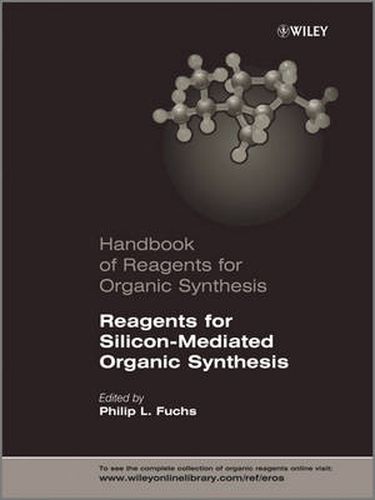Readings Newsletter
Become a Readings Member to make your shopping experience even easier.
Sign in or sign up for free!
You’re not far away from qualifying for FREE standard shipping within Australia
You’ve qualified for FREE standard shipping within Australia
The cart is loading…






Over the last three decades the importance of organosilicon chemistry has greatly increased because it has opened a number of new synthetic strategies. Silicon reagents are usually low-cost, versatile and allow a wide range of reactions. This is the first Handbook to compile essential Silicon containing reagents and makes use of the leading reagent database e-EROS. Another hot volume in the series Handbooks of Reagents for Organic Synthesis , this is a must-have resource for all synthetic chemists working in drug development and medicinal chemistry. For the selection the Editor focussed on three key synthetic approaches with the greatest impact: 1. Use of silicon as a ‘temporary tether’ by unifying a reactive pair of functional groups and taking advantage of their template-biased intramolecular cyclization. 2. The specific use of the silane functionality as a hetero t- butyl group, often colloquially referred to as the use of silicon as a ‘fat proton’. 3. The use of the Brook rearrangement as an ‘anion relay stratagem’. A new feature in this Handbook is the reagent finder, an alphabetically organized lookup table arranged by organic functionality and specific structure of the silicon atom to which it is bound.
$9.00 standard shipping within Australia
FREE standard shipping within Australia for orders over $100.00
Express & International shipping calculated at checkout
Over the last three decades the importance of organosilicon chemistry has greatly increased because it has opened a number of new synthetic strategies. Silicon reagents are usually low-cost, versatile and allow a wide range of reactions. This is the first Handbook to compile essential Silicon containing reagents and makes use of the leading reagent database e-EROS. Another hot volume in the series Handbooks of Reagents for Organic Synthesis , this is a must-have resource for all synthetic chemists working in drug development and medicinal chemistry. For the selection the Editor focussed on three key synthetic approaches with the greatest impact: 1. Use of silicon as a ‘temporary tether’ by unifying a reactive pair of functional groups and taking advantage of their template-biased intramolecular cyclization. 2. The specific use of the silane functionality as a hetero t- butyl group, often colloquially referred to as the use of silicon as a ‘fat proton’. 3. The use of the Brook rearrangement as an ‘anion relay stratagem’. A new feature in this Handbook is the reagent finder, an alphabetically organized lookup table arranged by organic functionality and specific structure of the silicon atom to which it is bound.